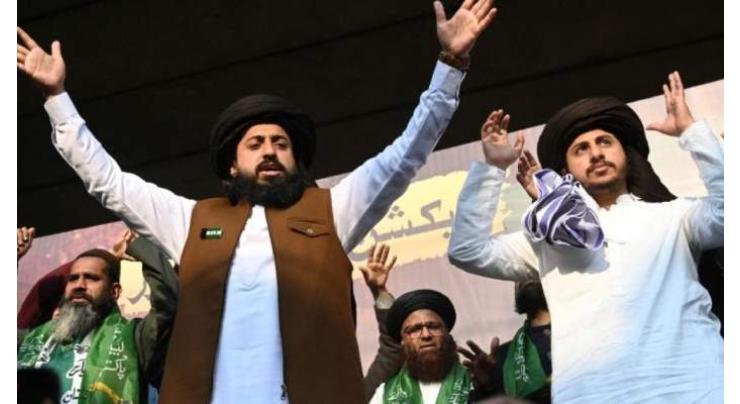
TLP Chief Saad Rizvi Traced After Muridke Violence
Abdullah Hussain (@Abdulla99267510) Published October 14, 2025 | 01:36 PM

Law enforcement traced TLP leader Saad Rizvi as Muridke protests turned violent, leaving a police officer dead and dozens injured.
LAHORE : (UrduPoint/UrduPoint / UrduPoint / Pakistan Point News-Oct,14, 2025) Law enforcement agencies have reportedly traced the whereabouts of Tehreek-e-Labbaik Pakistan (TLP) chief Saad Rizvi and his associate, Anas Rizvi, and are expected to arrest them soon, sources said.
Officials did not confirm reports that the two leaders were injured but advised that if they were, they should surrender immediately to receive medical treatment.
Meanwhile, police have brought the situation under control following violent clashes in Muridke between TLP protesters and law enforcement personnel. According to police sources, the overnight unrest on October 12–13 resulted in the death of one police officer and injuries to dozens of others.
During the confrontation, protesters allegedly used stones, nail-studded sticks, and petrol bombs, snatched weapons from police, and opened fire using those weapons. The initial investigation confirmed that bullets recovered from the scene were fired from snatched arms.
Police reported that 48 officers were injured, including 17 by gunfire, while around 40 vehicles — both public and private — and several shops were set ablaze. Three TLP activists and one bystander were killed, and nearly 30 civilians were injured.
Eyewitnesses claimed protesters seized vehicles, including a university bus, and used them during the riots, with some reportedly driven into crowds.
Authorities described the unrest as a “coordinated violent act” incited by TLP leadership, which allegedly fled the scene, endangering public safety. Police have arrested several suspects and vowed to hold all involved accountable under the law.
Officials emphasized that snatching weapons, using petrol bombs, and torching vehicles cannot be considered peaceful protest, stressing the need for a unified state strategy to protect citizens and property.
Related Topics
Recent Stories

Sharjah Agriculture honoured with FAO award

Mohammed bin Rashid directs GITEX TechCation 2026 to be developed into world’s ..

Chief of the Naval Staff (CNS) Admiral Naveed Ashraf visits USA, meets US milita ..

Punjab Governor Sardar Saleem Haider Khan stresses promotion of education, honou ..

DP World launches new Jebel Ali-Berbera shipping route

Laborer's son from Pindigheb shines in Intermediate Exams, receives Governor's p ..

SBCA launches city-wide campaign to demolish dangerous buildings in Karachi

Abu Dhabi launches groundbreaking no-code ‘AI-in-a-box’ platform at GITEX Gl ..

EGA Spectro Alloys to further expand Minnesota aluminium recycling plant

Pakistan’s first mega festival 'DreamFest 2025' to initiate on Oct 17

Federal Minister Attaullah Tarar administers oath to new APNEC leadership, pledg ..

Falak Javed granted bail in case of sharing controversial post
More Stories From Pakistan
-

Chief of the Naval Staff (CNS) Admiral Naveed Ashraf visits USA, meets US military leadership
38 minutes ago -

Punjab Governor Sardar Saleem Haider Khan stresses promotion of education, honours Attock’s outsta ..
38 minutes ago -

Laborer's son from Pindigheb shines in Intermediate Exams, receives Governor's praise
38 minutes ago -

SBCA launches city-wide campaign to demolish dangerous buildings in Karachi
38 minutes ago -

Pakistan’s first mega festival 'DreamFest 2025' to initiate on Oct 17
44 minutes ago -

Federal Minister Attaullah Tarar administers oath to new APNEC leadership, pledges support for journ ..
44 minutes ago
-

Falak Javed granted bail in case of sharing controversial post
44 minutes ago -

Spray program launched to prevent Dengue, Malaria, and Chikungunya
47 minutes ago -

City’s atmosphere touches toxic levels
47 minutes ago -

Prime Minister Muhammad Shehbaz Sharif congratulates Independent Group on winning SCBA election
47 minutes ago -

Seminar organized to mark World Food Day
47 minutes ago -

Two suspects killed in encounters
44 minutes ago











